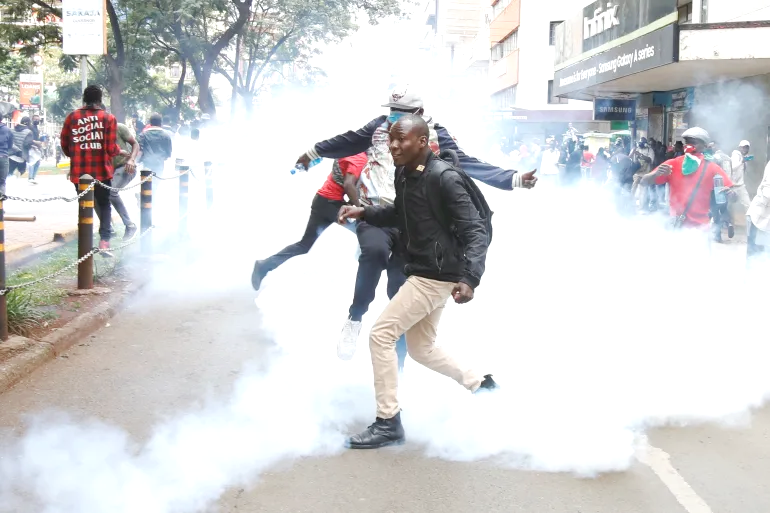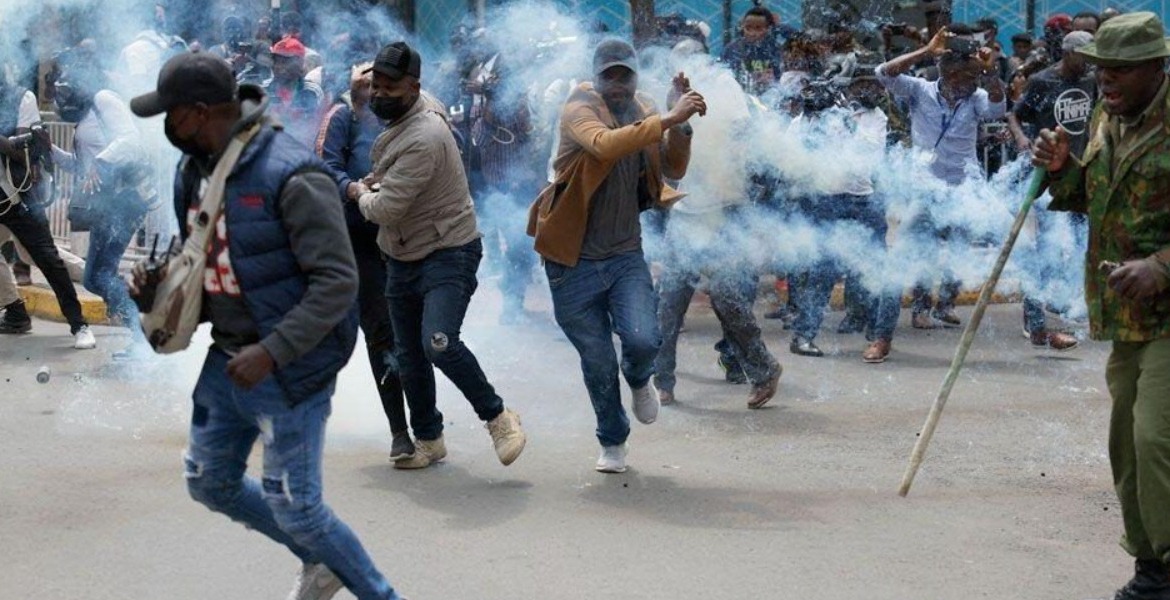Facebook Twitter (X) Instagram Somali Magazine - People's Magazine
Eleven people were killed and more than 50 police officers injured during nationwide protests in Kenya on July 7, according to a statement from the police. The protests, held on the 35th anniversary of Kenya’s 1990 pro-democracy uprising known as Saba Saba, drew thousands of demonstrators across the country.
In Nairobi, protesters clashed with heavily armed police who used live bullets and water cannons to block access to the city centre. Roads leading into the central business district were barricaded, and security forces were stationed throughout the capital. Protesters, many blowing whistles and waving signs, tried to push through the roadblocks, leading to violent confrontations.

The Saba Saba protests began in 1990, when Kenyans demanded a return to multiparty democracy after years of one-party rule under President Daniel arap Moi. Over time, the day has become a symbol of resistance and public demand for reform. This year, the protests evolved into a broader outcry against President William Ruto’s administration, with demonstrators calling for his resignation.
Many Kenyans say they are frustrated by rising corruption, police brutality, and economic hardship. Protesters accuse the government of sending armed thugs to cause chaos and discredit their peaceful demonstrations. The government, on the other hand, has labeled the protests an “attempted coup,” accusing the protesters of trying to destabilize the country.
Interior Minister Kipchumba Murkomen said on Sunday that the government was committed to maintaining law and order. He warned that security agencies would take strong action against those who cause violence or destruction during protests. “Our security forces are on high alert,” he said in a post on social media.

The unrest was felt across several parts of Kenya. In Nairobi, schools and at least one shopping mall closed down as a precaution. Reports of gunshot injuries began to emerge from multiple locations, and ambulances were seen rushing to help the wounded.
Francis Waswa, a construction worker who joined the protests, said, “We are not ready to go home because who will fight for our rights then? We will be here till evening.”
The recent wave of protests gained momentum following the death of teacher and blogger Albert Ojwang in police custody in June. His death sparked public outrage and demands for justice. Six people, including three police officers, have been charged with murder in connection to Ojwang’s death. All have pleaded not guilty.
Human rights organizations have reported at least 80 protest-related deaths since June 2024. Dozens of people have also been arrested, with some allegedly detained without due process. On Sunday, a press conference by the Kenya Human Rights Commission, which was addressing enforced disappearances and extrajudicial killings, was disrupted by a group of armed men who stormed the compound.
Activists and citizens have taken to social media to express their frustration with the government’s response. Leading activist Hanifa Aden posted, “The police getting rained on as they block every road while we stay at home warming our beds. Total shutdown and forced holiday executed by the state.”
The current protests reflect growing anger among Kenya’s youth, many of whom struggle to find stable employment. Despite having education and ambition, nearly 80% of the country’s workforce is stuck in informal and poorly paid jobs, adding to public discontent.
Although President Ruto, who was elected in 2022, faces mounting criticism, he still holds political power. His alliance with opposition leader Raila Odinga has left the country without a clear opposition figure heading into the 2027 elections.
As the situation continues to unfold, many Kenyans remain determined to stand up for their rights, even in the face of police crackdowns and government pushback.

